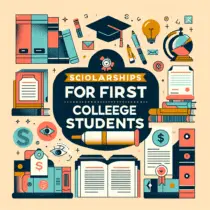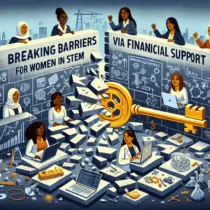Exploring Opportunities for Remote Learning Scholarships and Financial Aid
In an increasingly digital world, remote learning has transformed education, making it more accessible than ever. However, the cost of remote education can still be a barrier for many. Fortunately, numerous scholarships and financial aid opportunities exist to help students finance their online education.
The Growing Demand for Remote Learning
Remote learning offers flexibility, cost-efficiency, and the ability to study from any location. It’s particularly advantageous for those who cannot attend traditional brick-and-mortar institutions due to geographical limitations or personal commitments. As the demand for remote education grows, so does the range of scholarships and financial aid options available.
Types of Scholarships and Financial Aid
Scholarships for remote learning can vary widely. They might be based on academic merit, financial need, or specific fields of study. Financial aid can come in the form of grants, loans, or work-study programs. For instance, need-based scholarships are designed for students who require financial support, while merit-based scholarships reward academic performance or other talents.
Specific Scholarships for Remote Learning
Several specific scholarships are geared towards remote learners. Among them, the Westerwelle Scholarship for Entrepreneurs in Germany stands out. This particular scholarship is aimed at young entrepreneurs interested in online programs, providing financial assistance and mentorship to help them succeed.
Understanding the Application Process
The application process for remote learning scholarships and financial aid typically involves completing an application form, writing essays, and securing letters of recommendation. Students should be prepared to demonstrate their financial need, academic achievements, and career aspirations.
Global Opportunities for Remote Learning Scholarships
Scholarships are not limited to domestic students; several international scholarships support remote learning. The Netherlands Masters Scholarships From Top 8 Universities is a notable example. These scholarships cater to international students aiming to pursue master’s programs online through prestigious Dutch universities.
Eligibility Criteria and Deadlines
Each scholarship and financial aid program has specific eligibility criteria and deadlines. It’s crucial for students to thoroughly research these requirements and submit their applications well in advance. Eligibility criteria may include being enrolled in a remote learning program, maintaining a certain GPA, or pursuing a specific field of study.
The Role of Institutions
Education institutions play a crucial role in promoting and facilitating remote learning scholarships. Many universities and colleges have dedicated financial aid offices that assist students in finding and applying for scholarships. Additionally, institutions may offer their own scholarships to support remote learners.
Financial Aid for Veterans and Service Members
Veterans and active service members have unique financial aid opportunities for remote learning. Programs like the GI Bill and various military scholarships offer substantial support to service members seeking to continue their education online.
Corporate Scholarships and Grants
Companies and private organizations also offer scholarships and grants for remote learning. These corporate scholarships often aim to support students pursuing specific careers or fields of study. For instance, tech companies might provide scholarships for students enrolled in online computer science programs.
Navigating the Financial Aid Process
For many students, navigating the financial aid process can be daunting. It’s important to stay organized, keep track of deadlines, and prepare all necessary documents. Many educational websites and platforms offer resources and guidelines to help students through the application process.
Balancing Remote Learning and Work
Many remote learners juggle studies with work. Scholarships and financial aid can provide the financial support needed to balance these commitments. Some scholarships are specifically designed for working professionals, understanding the unique challenges they face.
Impact of Remote Learning on Career Advancement
Remote learning can significantly impact career advancement. By obtaining scholarships and financial aid, students can pursue higher education without the burden of excessive debt, allowing them to focus on their career goals. Employers increasingly value online degrees, recognizing the skills and discipline required to complete them.
Looking Towards the Future
The future of education is undoubtedly digital. Scholarships and financial aid for remote learning will continue to grow, making education more accessible to diverse populations worldwide. As technology evolves, so will the opportunities for remote learners to achieve their academic and career objectives.
Conclusion
Remote learning opens doors to education that were previously inaccessible to many. With various scholarships and financial aid options available, students from all walks of life can benefit from online education. By leveraging these opportunities, learners can overcome financial barriers and pursue their dreams with confidence.






